
Leprosy, also known as Hansen's disease (HD), is a long-term infection by the bacteria Mycobacterium leprae or Mycobacterium lepromatosis. Infection can lead to damage of the nerves, respiratory tract, skin, and eyes. This nerve damage may result in a lack of ability to feel pain, which can lead to the loss of parts of a person's extremities from repeated injuries or infection through unnoticed wounds. An infected person may also experience muscle weakness and poor eyesight. Leprosy symptoms may begin within one year, but, for some people, symptoms may take 20 years or more to occur.

Liza of Lambeth (1897) was W. Somerset Maugham's first novel, which he wrote while he was a medical student and obstetric clerk at St Thomas's Hospital in Lambeth, then a working-class district of London. It depicts the short life and death of Liza Kemp, an 18-year-old factory worker who lives with her aging mother in the fictional Vere Street off Westminster Bridge Road (real) in Lambeth.

Father Damien or Saint Damien of Molokai, SS.CC. or Saint Damien De Veuster, born Jozef De Veuster, was a Roman Catholic priest from Belgium and member of the Congregation of the Sacred Hearts of Jesus and Mary, a missionary religious institute. He was recognized for his ministry, which he led from 1873 until his death in 1889, in the Kingdom of Hawaiʻi to people with leprosy, who lived in government-mandated medical quarantine in a settlement on the Kalaupapa Peninsula of Molokaʻi.

A leper colony, also known by many other names, is an isolated community for the quarantining and treatment of lepers, people suffering from leprosy. M. leprae, the bacterium responsible for leprosy, is believed to have spread from East Africa through the Middle East, Europe, and Asia by the 5th century before reaching the rest of the world more recently. Historically, leprosy was believed to be extremely contagious and divinely ordained, leading to enormous stigma against its sufferers. Other severe skin diseases were frequently conflated with leprosy and all such sufferers were kept away from the general public, although some religious orders provided medical care and treatment. Recent research has shown M. leprae has maintained a similarly virulent genome over at least the last thousand years, leaving it unclear which precise factors led to leprosy's near elimination in Europe by 1700. A growing number of cases following the first wave of European colonization, however, led to increased attention towards leprosy during the New Imperialism of the late 19th century. Following G.A. Hansen's discovery of the role of M. leprae in the disease, the First International Leprosy Conference held in Berlin in 1897 renewed interest and investment in the isolation of lepers throughout the European colonial empires. Although Western countries now generally treat cases of leprosy individually on an outpatient basis, traditional isolated colonies continue to exist in India, China, and some other countries.
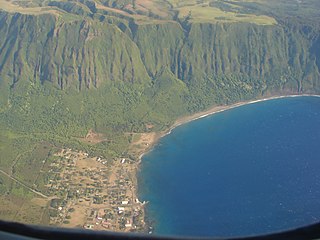
Kalaupapa is a small unincorporated community on the island of Molokaʻi, within Kalawao County in the U.S. state of Hawaii. In 1866, during the reign of Kamehameha V, the Hawaii legislature passed a law that resulted in the designation of Molokaʻi as the site for a leper colony, where patients who were seriously affected by leprosy could be quarantined, to prevent them from infecting others. At the time, the disease was little understood: it was believed to be highly contagious and was incurable until the advent of antibiotics. The communities where people with leprosy lived were under the administration of the Board of Health, which appointed superintendents on the island.

Kalaupapa National Historical Park is a United States National Historical Park located in Kalaupapa, Hawaiʻi, on the island of Molokaʻi. Coterminous with the boundaries of Kalawao County and primarily on Kalaupapa peninsula, it was established by Congress in 1980 to expand upon the earlier National Historic Landmark site of the Kalaupapa Leper Settlement. It is administered by the National Park Service. Its goal is to preserve the cultural and physical settings of the two leper colonies on the island of Molokaʻi, which operated from 1866 to 1969 and had a total of 8500 residents over the decades.

The Hawaiians, released in the UK as Master of the Islands, is a 1970 United States historical film based on the 1959 novel Hawaii by James A. Michener. It was directed by Tom Gries with a screenplay by James R. Webb. The cast included Charlton Heston as Whipple Hoxworth and Geraldine Chaplin. The performance by Tina Chen led to her receiving a Golden Globe nomination as best supporting actress.
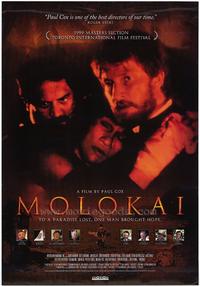
Molokai: The Story of Father Damien is a 1999 biographical film of Father Damien, a Belgian priest working at the Kalaupapa Leprosy Settlement on the Hawaiian island of Molokai. It was directed by Paul Cox.

The Leper War on Kauaʻi also known as the Koolau Rebellion, Battle of Kalalau or the short name, the Leper War. Following the overthrow of the Kingdom of Hawaii, the stricter government enforced the 1865 "Act to Prevent the Spread of Leprosy" carried out by Attorney General and President of the Board of Health William Owen Smith. A revolt broke out in Kauaʻi, against the forced relocation of all infected by the disease to the Kalaupapa Leprosy Colony of Kalawao on the island of Molokai.
Behkadeh Raji is the first leper colony to be built as an economically self-sufficient, independent village. It was built in 1961 on the initiative of Farah Pahlavi in Iran. The aim of the village concept was to not only achieve optimal care of lepers by the coexistence of healthy and diseased, but also to cultivate dialog and the exchange of information with the public about leprosy sufferers.
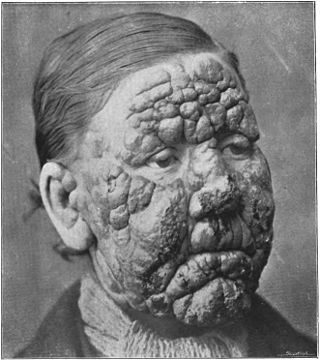
Although leprosy, or Hansen's Disease, was never an epidemic in The United States, cases of leprosy have been reported in Louisiana as early as the 18th century. The first leprosarium in the continental United States existed in Carville, Louisiana from 1894-1999 and Baton Rouge, Louisiana is the home of the only institution in the United States that is exclusively devoted to leprosy consulting, research, and training.
The Culion Leper Colony is a former leprosarium located on Culion, an island in the Palawan province of the Philippines. It was established by the U.S. government in order to rid leprosy from the Philippine Islands through the only method known at the time: isolating all existing cases and gradually phasing out the disease from the population. In addition to segregating the disease from the rest of the population, the island was later established in order to offer a better opportunity for people afflicted with leprosy to receive adequate care and modern treatments.
Arthur Lewis Piper was a medical missionary in the Belgian Congo, supported by the Detroit Epworth League. He worked for the Mission Conference of the Methodist Episcopal Church in the most remote mission station near Kapanga in the Belgian Congo. Piper helped the Lunda tribe battle malaria, sleeping sickness, and leprosy, among many other diseases.
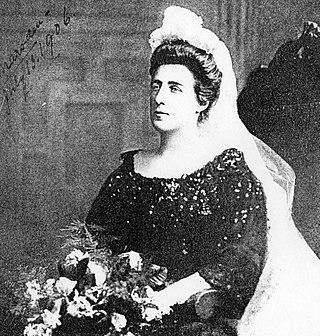
Kate Marsden was a British missionary, explorer, writer and nurse. Supported by Queen Victoria and Empress Maria Feodorovna she investigated a cure for leprosy. She set out on a round trip from Moscow to Siberia to find a cure, creating a leper treatment centre in Siberia. She returned to England and helped to found Bexhill Museum, but she was obliged to retire as a trustee. Marsden's finances came under scrutiny as did her motives for the journey. She was however elected a fellow of the Royal Geographical Society. She has a large diamond named after her and is still celebrated in Siberia, where a large memorial statue was erected at Sosnovka village in 2014.

The 1321 lepers' plot was an alleged conspiracy of French lepers to spread their disease by contaminating water supplies, including well water, with their powders and poisons. According to the American historian Solomon Grayzel, lepers were the most abused group of people during the Middle Ages: they were thrown out of settlements and treated as wild animals due to the widespread belief that their disease was highly contagious. However, other historians have contested such a view, pointing out that lepers often lived within communities in leper houses (leprosaria) and were supported by charitable donations.
Dorothy Dunning Chacko was an American social worker, humanitarian and medical doctor, whose efforts were reported behind the establishment of a lepers' colony at Bethany village, in Ganaur, Sonepat district in the Indian state of Haryana. She was a Hall of Famer of the County of Delaware, Pennsylvania a recipient of the Take the Lead Honour from the Girl Scouts of Eastern Pennsylvania and the Smith College Medal. She was honoured by the Government of India in 1972 with Padma Shri, the fourth highest Indian civilian award.

The Laughing Monsters is a spy novel by Denis Johnson published in 2014 by Farrar, Straus and Giroux.
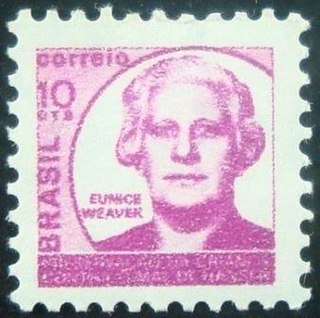
Eunice de Sousa Gabbi Weaver was a Brazilian philanthropist. She was a leader of leprosy charities in Brazil from the 1930s to the 1960s.
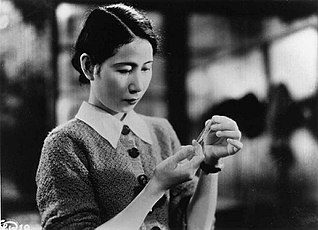
Spring on Leper's Island is a 1940 Japanese drama film directed by Shirō Toyoda. It is based on the memoir of Masako Ogawa, a Japanese doctor who specialised in leprosy treatment, and is noted by film historians for its humanist and compassionate theme in contrast to the militarist national film policy at the time.

Mary Reed (1854-1943) was an American Christian missionary to India. For the first ten years of her career, she worked as a school teacher in her home state of Ohio. In 1884, she went to India as a missionary of the Cincinnati Branch of the Woman's Foreign Missionary Society of the Methodist Episcopal Church, and entered upon zenana missions work at Cawnpore. In 1890, she became conscious of a strange physical disability, and thinking that her health was failing, returned to the U.S. on a furlough. While recovering in Cincinnati came the dread suspicion and subsequent discovery that the malady was leprosy. At first, she was overwhelmed with the realization, but she quickly decided to give her life to work among the lepers in India, and her thoughts turned to Pithoragarh, among the foothills of the Himalayas, at the base of Chandag Heights, where a group of lepers lived in whom she had already become interested. Her suspicions as to the nature of her disease were confirmed by every specialist she consulted. She kept the diagnosis a secret, however, from her family, with the exception of one sister, and returned to India in 1891. Proceeding to Pithoragarh, Reed informed her family and friends by letter of her purpose, and her reason for choosing this service. Thereafter, she conducted her important work at Chandag, and built up an institution which in many respects was a model of order and well-arranged facilities. Reed continued to work among the lepers of India until her death in 1943. She was a recipient of the Kaisar-i-Hind Medal.
















